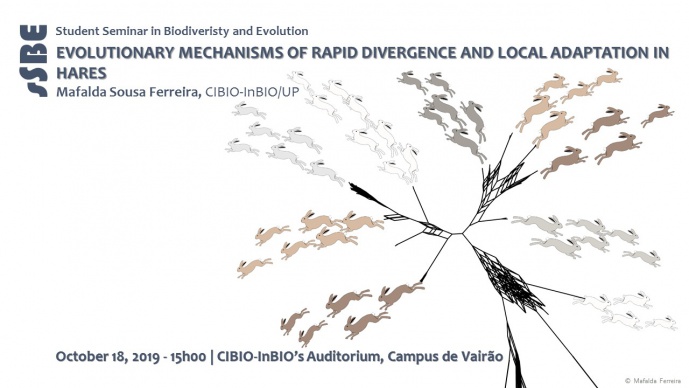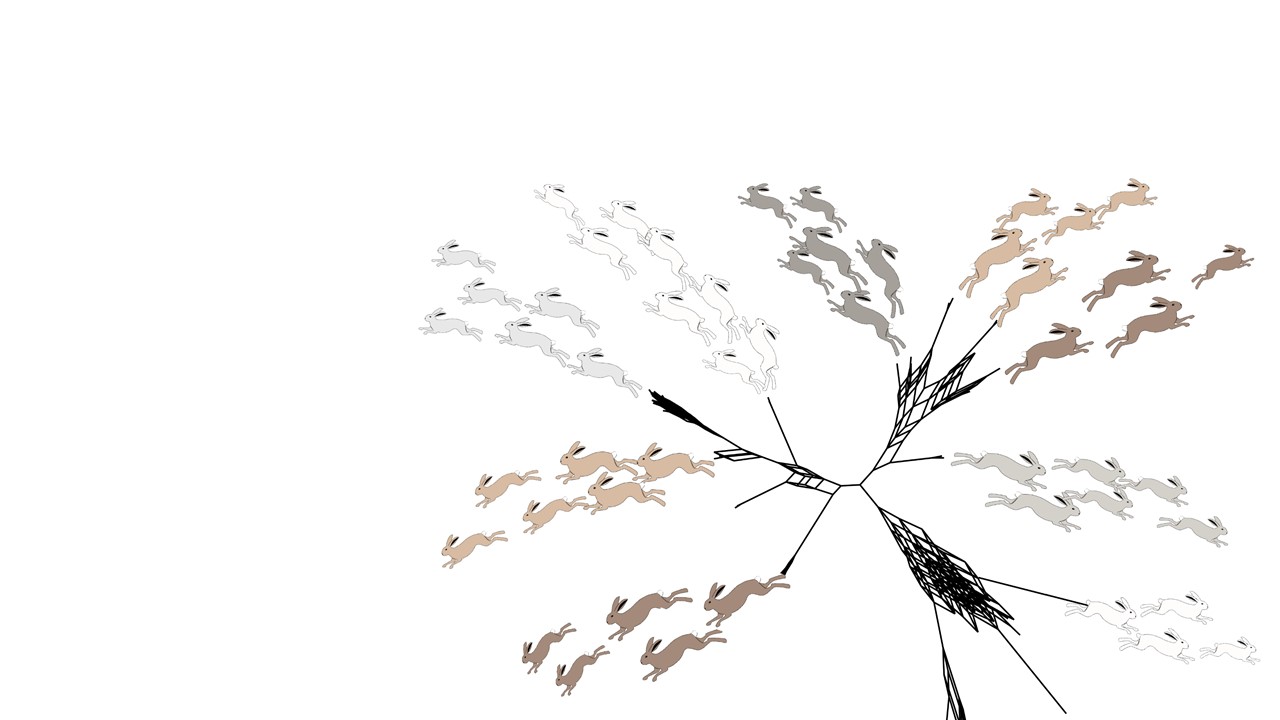EVOLUTIONARY MECHANISMS OF RAPID DIVERGENCE AND LOCAL ADAPTATION IN HARES

STUDENT SEMINAR IN BIODIVERSITY AND EVOLUTION

During my PhD, I have been focused on understanding how species evolve and adapt to their environments, at different evolutionary scales. On one study case, I focused on the long-term impact of hybridization during rapid divergence. While we know that genetic variation shared through hybridization has an important impact on the gene pool of diverging species, often influencing local adaptation, this evidence is often restricted to modern closely related species pairs. Contrastingly, recent works have documented cases of introgression affecting the ancestrals of extant species, but the extent to which genetic variation originating on past events of admixture prevails and influences the evolution of modern populations is not clear. Using the Lepus radiation as a case study, I show that hybridization is pervasive throughout the phylogeny, including among ancestral branches. These results show that the contribution of ancestral hybridization to modern levels of standing polymorphism in closely related groups of species can be pervasive. Furthermore, by studying non-random patterns of sharing of genetic variation through ancestral introgression, I show that hybridization among the ancestrals hare species distributed in northern latitudes has potentially contributed to adaptation to highly seasonal environments. I will also present preliminary results on a second study, where I have delved into the genetic basis and evolutionary history of seasonal coat color change in hares. Using population-level data, I have studied the genetic basis of winter coat color polymorphism in white-tailed jackrabbits (L. townsendii) and found an underlying multigenic genetic basis, which contrasts with findings on other hare species. With genome-wide data across several Lepus species, I will discuss how evolution of this trait might have been shaped by selection on ancestral polymorphism and gene flow among species.
Mafalda Sousa Ferreira so far has been focused on the evolution and genetic basis of adaptive traits, and is interested in understanding the contribution of introgression and maintenance of ancestral polymorphism to trait evolution. In particular, she studies seasonal coat color change in hares (Lepus spp.) using genomic tools. Mafalda has been investigating how this trait has evolved in a phylogenetic context, using exome and genome data from several hare species. She has also been studying the genetic basis of winter coat color polymorphism in the white-tailed jackrabbit (L. townsendii), both to understand the genetic basis of the trait in this particular species and its evolution in the context of the hare radiation. She develops her work in the EVOCHANGE group lead by José Melo-Ferreira and in collaboration with Jeffrey Good, from the University of Montana.
[Host: José Melo Ferreira, Genomics of Evolutionary Change]
Image credits: Mafalda Ferreira